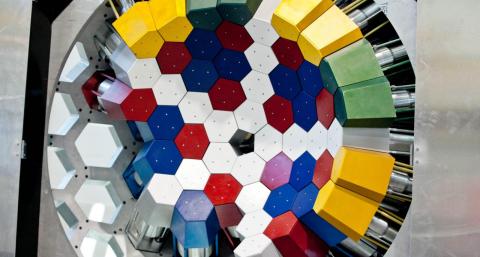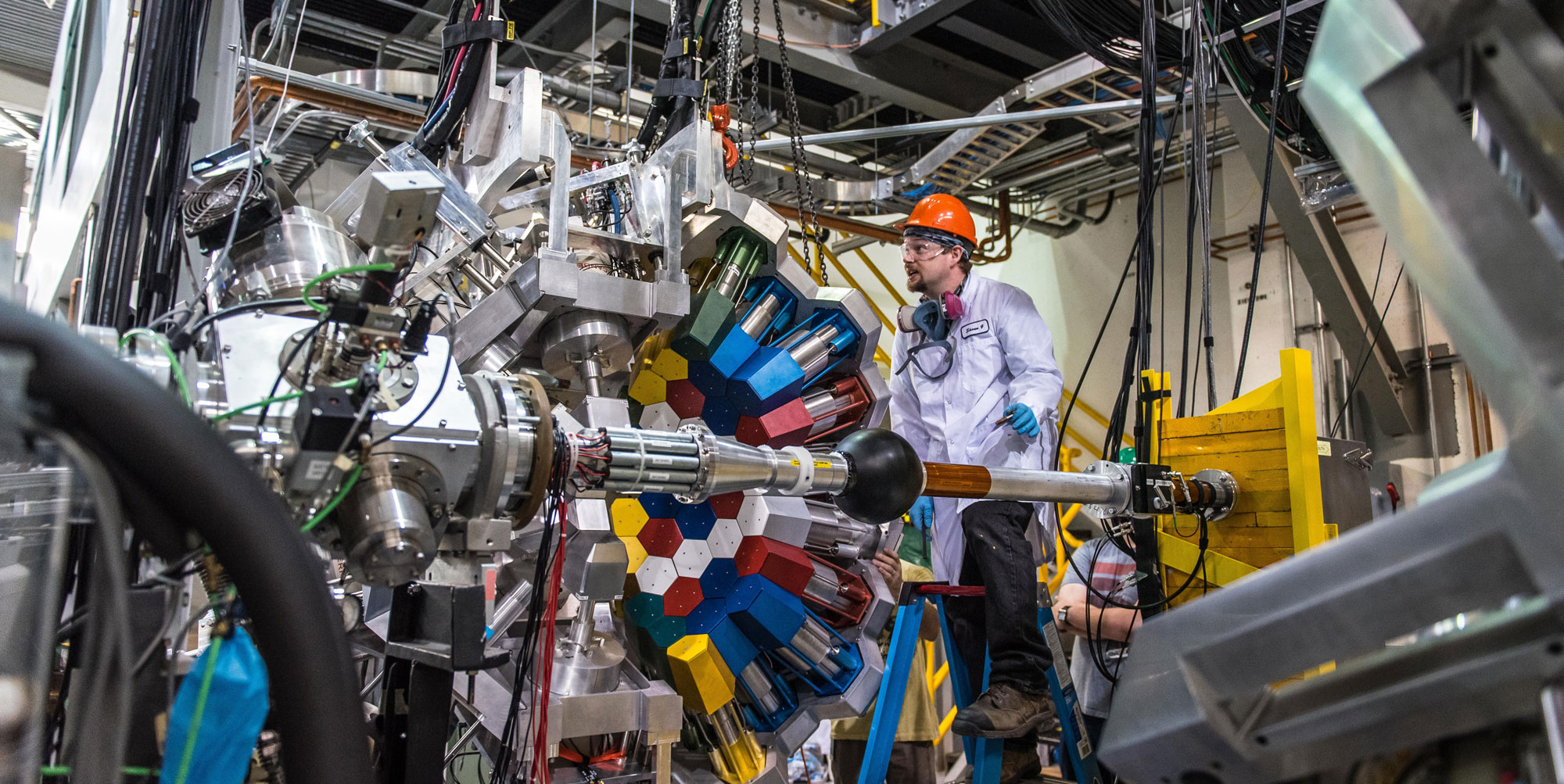
Take a stroll through the ISAC I experimental hall and few experiments catch your eye the way that DESCANT (DEuterated SCintillator Array for Neutron Tagging) does. It’s striking in its symmetry and has, on countless occasions, been the subject of photographers during the Global Physics Photowalk.
Why are people so captivated by DESCANT? And, perhaps the most important question that people have when they see it, what does it do?
Dr. Paul Garrett, a professor of experimental nuclear physics at the University of Guelph, is the mastermind behind TRIUMF’s most photogenic experiment. In 2002, Paul noticed that TRIUMF lacked a large scale neutron detector array, which he felt was important for a national lab to have. “I thought about having neutron detectors oriented towards use with TIGRESS,” he says. “While I was dreaming of these neutron detectors, I came across this special material that we ended up adopting for DESCANT – this deuterated scintillator.”
Paul approached Jean Michel Poutissou, TRIUMF’s former science director, and introduced the idea of DESCANT. The two came to a “gentleman’s agreement,” as Paul puts it, to fund the equipment: TRIUMF would be responsible for the support structure while Paul sought funding for the detectors and electronics.
The Canadian Foundation for Innovation (CFI) provided roughly 40% of the funding, an amount which was matched by the Ontario Ministry of Research and Innovation. The suppliers of the detectors also gave the project team a favourable discount, and a good thing too, because unforeseen changes to the design of DESCANT’s support structure meant that original ideas had to be tossed out and rethought, resulting in greater expenses.
DESCANT detects one kind of particle that is given off in either nuclear reactions or nuclear decays: neutrons. What makes it such a popular choice for photos by photographers and casual visitors alike is its unique array of up to 70 colourful detectors. Each hexagonal detector is deformed slightly in order to properly tile them in a half sphere, a design that was conceived by James Wong, one of Paul’s master’s students. “I told him about the project, what the problem was, and he went away and came back with this design,” Paul says. This unique and beautiful arrangement maximizes the detection ef\iciency because it leaves only the tiniest of gaps between each detector – just big enough to slip a 20 dollar bill through.
DESCANT’s distinct colour pattern is not intentional. Each detector is labeled with a colour according to its shape, with the three basic shapes being red, white and blue (Paul explains that he was in the US when these colours were selected and the choices seemed appropriate). Mirror-symmetric yellow and green detectors are used for the outer ring of DESCANT, making it one of the most colourful detector arrays on site.The manufacturer of the detectors offered to paint each detector according to their colour label, to which Paul readily agreed. As a result, the colourful array that is DESCANT was born. “There’s nothing quite like it,” Paul says with pride. “It’s accidental but a very happy accident. Symmetry is beauty!”

Like many others, Paul is captivated by DESCANT, but there’s more to his awe than what meets the eye. DESCANT has become a symbol of the hard work of his students and collaborators. Not only is it a testament to what bright students can do when placed in the right environment with the right opportunities, but it’s also an example of the connection between TRIUMF – a national lab – and the University of Guelph, despite the 4300 km that separate them. “This project emphasized the role TRIUMF plays on the Canadian scene; a model of how things should work,” he explains.
For him, part of DESCANT’s magic is the knowledge of what it took to create it. “I am inspired by its beauty. After coming up with the idea back in 2002, seeing the hard work the students put into designing it, the struggles with the manufacturer during the economic downturn in ‘08, to finally seeing it through to completion, there is an immense sense of satisfaction to go to TRIUMF, walk into the experimental hall, and behold.”
“Behold” indeed. It’s certainly worth taking a closer look.
- Carla Rodrigo, Communications Assistant
